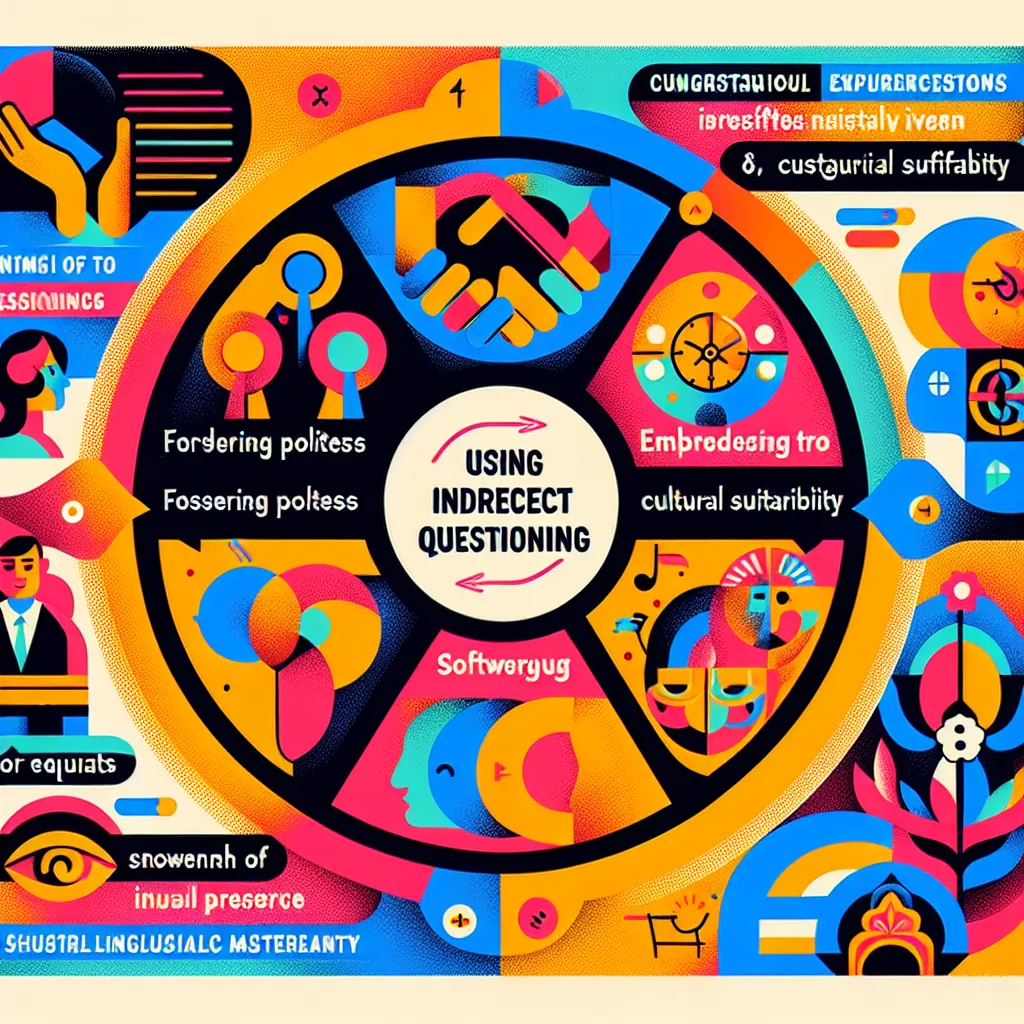Learning to use indirect questions correctly is an essential skill for mastering English grammar and improving your overall fluency. Whether you’re preparing for the IELTS exam or simply want to enhance your language skills, understanding indirect questions can significantly boost your communication abilities. In this comprehensive guide, we’ll explore effective strategies and provide practical tips to help you master the art of using indirect questions correctly.
Understanding Indirect Questions
What Are Indirect Questions?
Indirect questions are polite ways of asking for information. Unlike direct questions, they are not phrased as questions but rather as statements. They often begin with phrases like “Could you tell me,” “Do you know,” or “I was wondering if.” Indirect questions are commonly used in formal situations or when speaking to strangers to sound more polite and less intrusive.
For example:
- Direct question: “Where is the nearest bank?”
- Indirect question: “Could you tell me where the nearest bank is?”
Why Are Indirect Questions Important?
Indirect questions play a crucial role in English communication for several reasons:
- Politeness: They help you sound more courteous and respectful, especially in formal situations.
- Cultural appropriateness: In many English-speaking cultures, indirect questions are preferred in professional or unfamiliar settings.
- Softening requests: They make requests for information less demanding and more approachable.
- Demonstrating language proficiency: Proper use of indirect questions showcases a higher level of English language skills.
 Importance of Indirect Questions
Importance of Indirect Questions
Strategies for Learning Indirect Questions
1. Understand the Structure
To use indirect questions correctly, you need to familiarize yourself with their structure. Here are the key points to remember:
- Indirect questions start with a phrase like “Could you tell me,” “Do you know,” or “I was wondering.”
- The word order in the second part of the question changes to that of a statement.
- There’s no auxiliary verb (do, does, did) in the second part of the question.
- Question marks are only used if the entire sentence is a question.
Example:
- Direct: “What time does the movie start?”
- Indirect: “Could you tell me what time the movie starts?”
2. Practice with Common Introductory Phrases
Learn and practice using various introductory phrases for indirect questions:
- Could you tell me…?
- Do you know…?
- I was wondering…
- Would you mind telling me…?
- I’d like to know…
- Can you explain…?
Example:
- Direct: “How much does this cost?”
- Indirect: “I was wondering how much this costs.”
3. Focus on Word Order
Pay attention to the word order in the second part of the indirect question. It should follow the structure of a statement, not a question.
Example:
- Direct: “Where is the library?”
- Incorrect indirect: “Could you tell me where is the library?”
- Correct indirect: “Could you tell me where the library is?”
4. Use Yes/No Questions Correctly
For yes/no questions, use “if” or “whether” in the indirect form:
Example:
- Direct: “Is the restaurant open?”
- Indirect: “Do you know if the restaurant is open?”
5. Practice with Real-Life Scenarios
Create or imagine situations where you might need to use indirect questions and practice formulating them. This could include asking for directions, inquiring about prices, or requesting information in a professional setting.
Example scenario: Asking about a job application
- Direct: “Have you received my application?”
- Indirect: “I was wondering if you have received my application.”
Common Mistakes to Avoid
When learning to use indirect questions, be aware of these common pitfalls:
- Forgetting to change the word order in the second part of the question.
- Using auxiliary verbs (do, does, did) unnecessarily in the indirect form.
- Keeping the question mark when the entire sentence is not a question.
- Using direct question words (what, where, when) instead of “if” or “whether” for yes/no questions in indirect form.
Practical Exercises
To reinforce your understanding and improve your skills with indirect questions, try these exercises:
- Conversion Practice: Take a list of direct questions and convert them into indirect questions.
- Role-Play: Practice using indirect questions in simulated conversations with a study partner.
- Writing Task: Write a formal email or letter that includes several indirect questions.
- Listening Exercise: Watch English movies or TV shows and note how characters use indirect questions in different situations.
 Indirect Questions Exercises
Indirect Questions Exercises
Resources for Further Learning
To continue improving your skills with indirect questions, consider these resources:
- IELTS Study Guides: These often contain sections dedicated to indirect questions and their usage in the IELTS exam.
- Grammar Books: Look for comprehensive English grammar books that cover indirect questions in detail.
- Online Language Learning Platforms: Websites like Duolingo, BBC Learning English, and British Council offer interactive exercises on indirect questions.
- Language Exchange Apps: Practice using indirect questions with native speakers through apps like Tandem or HelloTalk.
Conclusion
Mastering indirect questions is a valuable skill that can significantly enhance your English language proficiency. By understanding the structure, practicing regularly, and avoiding common mistakes, you can confidently use indirect questions in various situations. Remember, the key to success is consistent practice and application in real-life scenarios. Keep refining your skills, and you’ll soon find yourself using indirect questions naturally and effectively in your English conversations.
We encourage you to share your experiences or ask any questions about using indirect questions in the comments below. Keep practicing, and watch your English communication skills soar!




